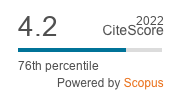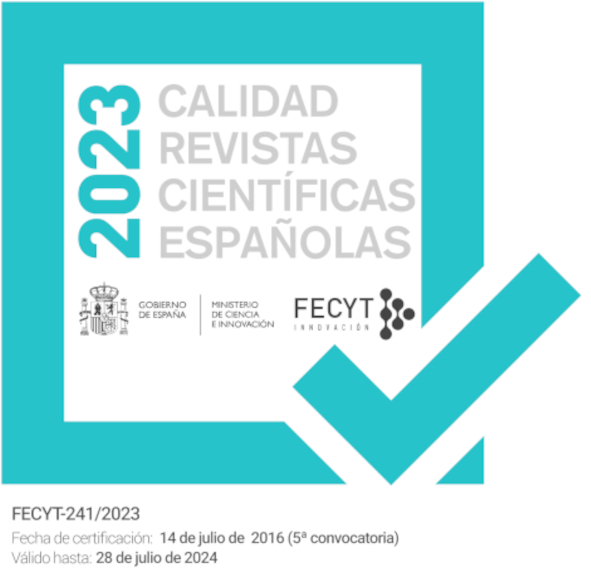Erosive features caused by a Magellanic penguin (Spheniscus magellanicus) colony on Martillo Island, Beagle Channel, Argentina
DOI:
https://doi.org/10.18172/cig.4337Keywords:
Magellanic penguin, erosive features, zoogeomorphology, Martillo Island, Beagle ChannelAbstract
An active Magellanic penguin (Spheniscus magellanicus) colony has been established on Martillo Island, Beagle Channel (54°54´26” S; 67°22´58” W) since 1976. It is located in remnants of eroded drumlins placed in both ending and joined by gravel terraces of glaciofluvial and marine origin. Forest patches occupy the eastern side of the island while most of the island is covered by bushes, tussocks and grasses. This paper presents penguins as bio-erosion agents on glacial and marine landforms. An analysis of multiple criteria surveyed in the field was performed, using Quantum GIS® 3.2.1 with remote sensing images and a digital model terrain of 12 m resolution. The morphometric data and multicriterial evaluation were collected during 2016-2017 austral summer. Soils and sediments of each landform (drumlin, glaciofluvial terrace, raised beach and beach) were sampled for particle size analysis, to determine if there is any relationship between the morphometric parameters of the cave and the sediments. Four bio-erosion classes were defined based on the erosion features observed in the field. “Moderate” was the prevailing erosion class recorded, in the E-NE part of the island. Bio-erosion features are mainly developed on the N facing slope of the east of the island, where a natural gully drains rainfall water, and over the glaciofluvial and marine terrace surfaces. Erosive features such as caves and bridges are mainly developed in silty drumlins. Pedestals are developed on bare soils and tussocks. Trails and cracks were also described as bio-erosion. No erosive features were recorded in the W part of the island. The bio-erosion map is one of the inputs for environmental degradation analysis and population dynamic research which is being done in the Magellanic penguin colony on Martillo Island, Beagle Channel.
Downloads
References
Benn, D.I, Evans, D.J.A. 1996. The interpretation and classification of subglacially deformed materials. Quaternary Science Reviews 15, 23-52. https://doi.org/10.1016/0277-3791(95)00082-8.
Boswall J, MacIver D. 1975. The Magellanic penguin Spheniscus magellanicus. In: B. Stonehouse (Ed.), The Biology of penguins, Macmillan, Londres. pp. 271-305. https://doi.org/10.1007/978-1-349-02270-0_11.
Borchard, P., Eldridge, D.J. 2011. The geomorphic signature of bare-nosed wombats (Vombatus ursinus) and cattle (Bos taurus) in an agricultural riparian ecosystem. Geomorphology, 130 (3-4), 365-373. https://doi.org/10.1016/j.geomorph.2011.04.021.
Bujalesky, G., Coronato, A., Roig, C., Rabassa, J. 2004. Holocene differential tectonic movements along the argentine sector of the Beagle Channel (Tierra del Fuego) inferred from marine palaeoenvironments. Bollettino de Geofísica Teórica Ed applicata 45 (2), 235-238.
Bujalesky, G., Coronato, A., Acevedo, R., Rabassa, J. 2008. El Canal Beagle. Un paisaje marino esculpido por el hielo. In: CSIGA (Eds.), Sitios de Interés Geológico de la República Argentina, Los geólogos nos cuentan. SEGEMAR, Anales 46, Tomo II-Sur, Buenos Aires. pp. 849-864.
Butler, D.R. 1995. Zoogeomorphology: animals as geomorphic agents. Cambridge University Press. New York. https://doi.org/10.1017/CBO9780511529900.
Coronato, A., Escobar, J., Mallea, C., Roig, C., Lizarralde, M. 2003. Características geomorfológicas de ríos de montaña colonizados por Castor canadensis en Tierra del Fuego, Argentina. Ecología Austral 13, 1526. Buenos Aires.
Coronato, A., Coronato, F., Mazzoni, E., Vázquez, M. 2008. Physical Geography of Patagonia and Tierra del Fuego. In: J. Rabassa (Ed.), Late Cenozoic of Patagonia and Tierra del Fuego. Development in Quaternary Sciences, Volume 11 (3), 13-56. Elsevier, Rotterdam. https://doi.org/10.1016/S1571-0866(07)10003-8.
Di Rienzo, J.A., Casanoves, F., Balzarini, M.G., Gonzalez, L., Tablada, M., Robledo, C.W. 2009. Infostat. FCA Universidad Nacional de Córdoba, Argentina.
Eldridge, D.J., Koen, T.B., Killgore, A., Huang, N., Whitford, W.G. 2012. Animal foraging as a mechanism for sediment movement and soil nutrient development: evidence from the semi-arid Australian woodlands and the Chihuahuan Desert. Geomorphology 157, 131-141. https://doi.org/10.1016/j.geomorph.2011.04.041.
Ercolano, B., Cruz, I., Marderwald, G. 2016. Impacto de los pingüinos patagónicos (Spheniscus magellanicus) en la dinámica geomorfológica de Punta Entrada (Patagonia austral, Argentina). Cuaternario y Geomorfología 30 (3-4), 29-48. https://doi.org/10.17735/cyg.v30i3-4.51463.
Gandini, P., Frere, E., Boersma, P.D. 1996 Status and conservation of Magellanic penguins Spheniscus magellanicus in Patagonia, Argentina. Bird Conservation International 6, 307-316. https://doi.org/10.1017/S0959270900001787.
García-Borboroglu, P., Yorio, P., Boersma, P., Del Valle, H., Bertellotti, M. 2002. Habitat use and breeding distribution of Magellanic Penguins in northern San Jorge Gulf, Patagonia, Argentina. Auck 119, 233-239. https://doi.org/10.1093/auk/119.1.233.
Gordillo, S., Coronato, A., Rabassa, J. 1992. Late Quaternary evolution of a subantarctic paleofjord, Tierra del Fuego. Quaternary Science Reviews 12 (10), 889-912. https://doi.org/10.1016/0277-3791(93)90027-J
Hall, K., Lamont, N. 2003. Zoogeomorphology in the Alpine: some observations on abiotic-biotic interactions. Geomorphology 55 (1-4), 219-234. https://doi.org/10.1016/S0169-555X(03)00141-7.
Haussmann N.S. 2017. Soil movement by burrowing mammals: A review comparing excavation size and rate to body mass of excavators. Progress in Physical Geography, 41 (1), 29-45. https://doi.org/10.1177/0309133316662569.
Isla, F., Bujalesky, G., Coronato, A. 1999. Procesos estuarinos en el Canal Beagle, Tierra del Fuego. Revista de la Asociación Geológica Argentina, 54 (4), 307-318.
Johnston, C. Naiman, R. 1987. Boundary dynamics at the aquatic-terrestrial interface: the influence of beaver and geomorphology. Landscape Ecology 1, 47-57. https://doi.org/10.1007/BF02275265.
Jones, C.G. 2012. Ecosystem engineers and geomorphological signatures in landscapes. Geomorphology, 157-158: 75-87. https://doi.org/10.1016/j.geomorph.2011.04.039.
Moore, D. 1983. Flora of Tierra del Fuego. Anthony Nelson Publisher, England. 396 pp.
R Development Core Team, 2009 R: A language and environment for statistical computing. R Foundation for Statistical Computing, Vienna, Austria
Rabassa, J., Heusser, C., Stuckenrath, R. 1986. New Data on Holocene Sea Transgression in the Beagle Channel: Tierra del Fuego, Argentina. Quaternary of South America and Antarctic Peninsula 4, 291-309.
Rabassa, J., Serrat, D., Marti, C., Coronato, A. 1990. Internal Structure of drumlins in Gable Island, Beagle Channel, Tierra del Fuego, Argentina. LUNDQUA Report 32, 3-5. Lund University.
Rabassa, J., Coronato, A., Bujalesky, G., Roig, C., Salemme, M., Meglioli, A., Heuser, C., Gordillo, S., Borromei, A., Quatrocchio, M. 2000. Quaternary of Tierra del Fuego, Southernmost South America: un updated review. Quaternary International 68-71, 217-240. https://doi.org/10.1016/S1040-6182(00)00046-X.
Rabassa, J., Coronato, A., Gordillo S, Candel MS, Martínez MA. 2009. Paleoambientes litorales durante la Trasgresion Marina Holocena en bahía Lapataia, Canal Beagle, Parque Nacional Tierra del Fuego, Argentina. Revista de la Asociación Geológica Argentina 65 (4), 648-659.
Raya Rey, A., Rosciano, N., Liljesthröm, M., Sáenz Samaniego, R., Schiavini, A. 2014. Species-specific population trends detected for penguins, gulls and cormorants over 20 years in sub-Antarctic Fuegian Archipelago. Polar Biology, 1-18. https://doi.org/10.1007/s00300-014-1526-6.
Santos González, J., Coronato, A., Ghys, M., Schiavini, A. 2006. Procesos erosivos generados por una colonia de pingüino magallánico (Spheniscus magellanicus), Isla Martillo, Canal Beagle, Argentina. VI Jornadas Nacionales de Geografía Física, Resúmenes: 18. Río Gallegos.
Schiavini, A., Raya Rey, A. 2001. Aves y mamíferos marinos en Tierra del Fuego: Estado de situación, interacción con actividades humanas y recomendaciones para su manejo. Fundación Patagonia Natural, Puerto Madryn.
Schiavini, A., Yorio, P. 1995. Distribution and abundance of seabird colonies in the Argentine sector of the Beagle Channel, Tierra del Fuego. Marine Ornithology 23, 39-46.
Schiavini, A., Yorio, P., Gandini, P., Raya Rey, A., Boersma, P.D. 2005. Los pingüinos de las costas argentinas: estado poblacional y conservación. El Hornero 20, 5-23.
Scioscia, G., Coronato, A., Quiroga, D., Schiavini, A., Pütz, K., Raya Rey, A. 2017. How much do penguins take care of their habitat? Population regulation in Magellanic penguin, Spheniscus magellanicus, at Martillo Island, Beagle Channel, Tierra del Fuego. Ornithological Congress of the Americas. XVII RAO/XXIV CBO/XCV AFO. Puerto Iguazú, Argentina.
Scolaro, A. 1980. El Pingüino de Magallanes (Spheniscus magellanicus) VI. Dinámica de la población de juveniles. Hist. Nat., Mendoza, Arg. 1 (25), 173-176.
Stockes, D.L., Boersma, P. 1991. Effects of substrate on distribution of Magellanic Penguin (Spheniscus magellanicus) burrows. The Auck 108, 923-933.
Stockes, D.L., Boersma, P. 1998. Nest-sites characteristics and reproductive success in Magellanic Penguin (Spheniscus magellanicus). The Auck 115 (1), 34-49. https://doi.org/10.2307/4089109.
Thomas, L., Buckland, S.T., Rexstad, E.A., Laake, J.L., Strindberg, S., Hedley, S.L., Bishop, J.R.B., Marques, T.A., Burnham, K.P. 2010. Distance software: design and analysis of surveys for estimating population size. Journal of Applied Ecology 47, 5-14. https://doi.org/10.1111/j.1365-2664.2009.01737.x.
Tricart, J. 1977. Précis de Géomophologie. Tome II. Géomorphologie Dynamique Générale. Paris, S.E.D.E.S.
Williams, T.D. 1995. The penguins. Oxford, USA: Oxford University Press.
Downloads
Published
How to Cite
Issue
Section
License
The authors retain copyright of articles and authorize Cuadernos de Investigación Geográfica / Geographical Research Letters the first publication. They are free to share and redistribute the article without obtaining permission from the publisher as long as they give appropriate credit to the editor and the journal.
Self-archiving is allowed too. In fact, it is recommendable to deposit a PDF version of the paper in academic and/or institutional repositories.
It is recommended to include the DOI number.
This journal is licensed under a Creative Commons Attribution 4.0 International License











